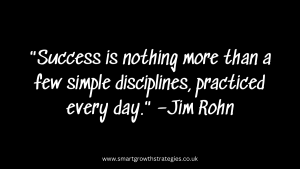Sales forecasting is a gateway to growth.
If growth is your plan, or even simply having security and stability within your business, then accurate sales forecasting methodology isn’t just a nice-to-have—it’s essential for growth, stability, and strategic decision-making.
Yet, too often, CEOs and senior sales leaders find themselves grappling with sales forecasts that are more fiction than fact.
The consequences?
Missed revenue targets, misaligned resources, frustrated teams, and lost opportunities.
If you’ve ever been burned by a bad sales forecast, this article will outline the critical reasons why an inadequate sales forecasting process can sabotage even the most capable sales teams.
More importantly, it will illuminate why investing in a reliable methodology is one of the most strategic moves you can make.
What’s the Big Deal About Sales Forecasting?
Sales forecasting is the backbone of effective business planning. A great forecast enables you to:
- Allocate resources efficiently.
- Identify and mitigate risks early.
- Set realistic, achievable revenue goals.
- Align sales and marketing efforts with growth objectives.
When sales forecasting is weak or non-existent, these benefits disappear, leaving your organisation vulnerable to a cascade of negative consequences.
The Downsides of Weak Sales Forecasting
1. Unreliable Revenue Predictions
Weak sales forecasting results in revenue predictions that are either overly optimistic or unnecessarily pessimistic. Both extremes are dangerous:
- Overly Optimistic Forecasts: You might overspend on resources, hire too quickly, or take on financial risks assuming revenue will materialise—only to fall short.
- Overly Pessimistic Forecasts: You could throttle growth by underinvesting in key areas, missing out on opportunities because you’re too cautious.
Ambitious sales teams thrive on clear, realistic goals, but weak forecasts create confusion and erode trust in leadership.
2. Poor Resource Allocation
Your sales team isn’t operating in a vacuum. They rely on resources like marketing campaigns, product support, and operational budgets. When sales forecasts are inaccurate:
- Marketing might spend heavily promoting products that don’t have the sales pipeline to justify it.
- Operational teams could overproduce inventory, leading to waste.
- Support functions might find themselves overwhelmed during unexpected revenue spikes.
In short, weak forecasts create a domino effect, causing inefficiencies across the organisation.
3. Missed Targets and Unrealistic Expectations
Setting sales targets based on guesswork or intuition leads to a cycle of frustration:
- Unrealistic targets demoralise your sales team, leading to high turnover.
- Missed targets frustrate investors and stakeholders, eroding confidence in leadership.
- Over time, the entire organisation becomes skeptical of any sales forecast, making it harder to inspire alignment and accountability.
4. Inability to Identify Risks Early
A robust sales forecasting methodology allows you to spot early warning signs of underperformance—whether that’s a key deal stalling, a region underdelivering, or a new product failing to gain traction. Without this, you’re flying blind:
- Problems go unnoticed until they’ve snowballed.
- Corrective action becomes reactive rather than proactive.
- Opportunities to pivot or salvage deals are missed.
5. Damaged Relationships with Stakeholders
CEOs and senior sales leaders are often accountable to boards, investors, and other stakeholders who expect accurate financial projections. Consistently poor sales forecasts can lead to:
- Strained relationships with key stakeholders.
- A loss of credibility when explanations for missed targets sound like excuses.
- Difficulty securing funding or approval for strategic initiatives.
6. Frustration Among Sales Teams
Ambitious salespeople are results-driven. They want clarity, achievable goals, and the tools to succeed. Weak forecasts create a cascade of issues that undermine their ability to perform:
- Misaligned quotas that either set them up to fail or don’t push them to their potential.
- A lack of visibility into realistic sales opportunities.
- Frustration with leadership’s inability to provide clear direction.
Over time, this frustration leads to disengagement, poor performance, and high attrition rates.
The Benefits of a Great Sales Forecasting Methodology
So, what happens when you implement a strong, accurate sales forecasting process? The benefits are transformational:
1. Confidence in Revenue Predictions
With a reliable methodology, you’ll have forecasts that accurately reflect your pipeline’s health. This builds confidence at every level of the organisation, from the sales floor to the boardroom.
2. Strategic Resource Allocation
Accurate forecasts ensure that resources—human, financial, and operational—are deployed where they’re most needed. This leads to:
- Improved ROI on marketing spend.
- Smarter hiring decisions.
- Optimised inventory and operational planning.
3. Improved Team Morale
When sales forecasts align with achievable targets, your team feels motivated and empowered to hit their goals. This creates a culture of accountability and high performance.
4. Proactive Risk Management
Early visibility into potential risks allows you to:
- Pivot strategies when deals stall.
- Provide additional coaching and resources to underperforming reps.
- Adjust expectations and communicate transparently with stakeholders.
5. Stronger Stakeholder Relationships
Accurate sales forecasts build trust with investors, board members, and other stakeholders. You’ll be seen as a leader who has their finger on the pulse of the business, capable of delivering consistent results.
6. Sustainable Growth
Ultimately, great sales forecasting supports sustainable growth by ensuring that your organisation can scale predictably. This positions you as a market leader and gives your team a competitive edge.
How to Build a Great Sales Forecasting Methodology
If you’re ready to leave weak sales forecasts behind, here are the key steps to build a robust methodology:
1. Leverage Data
- Use historical data to identify trends and patterns.
- Integrate CRM tools to track real-time pipeline activity.
2. Adopt the Right Tools
- Implement sales forecasting software that provides predictive analytics.
- Ensure your tools integrate seamlessly with your CRM and other sales platforms.
3. Align Sales and Marketing
- Foster collaboration between sales and marketing teams to ensure pipeline accuracy.
- Use shared metrics like lead quality and conversion rates to improve forecasts.
4. Train Your Team
- Provide training on forecasting methodologies and tools.
- Encourage regular pipeline reviews and accountability.
5. Regularly Review and Refine
- Hold quarterly reviews to assess the accuracy of past forecasts.
- Use feedback to refine your methodology over time.
Final Thoughts: Weak Sales Forecasting Is a Choice, Not a Fate
Inaccurate sales forecasts are more than just an inconvenience—they’re a barrier to achieving your organisation’s full potential. For CEOs and senior sales leaders who are tired of weak forecasts, the solution is clear: invest in a robust sales forecasting methodology.
By leveraging the right tools, processes, and training, you can transform your sales forecasts from a source of frustration into a strategic asset. The result?
Predictable revenue, empowered teams, and a stronger competitive position in the market.
Check out our Simple Sales Forecasting Training Course for Sales Leaders who want to build accurate sales forecasting as a key skill in their sales team
Ready to take the first step? Book a call with us today to discover how we can help you build a world-class sales forecasting process. Your ambitious sales team deserves nothing less.





